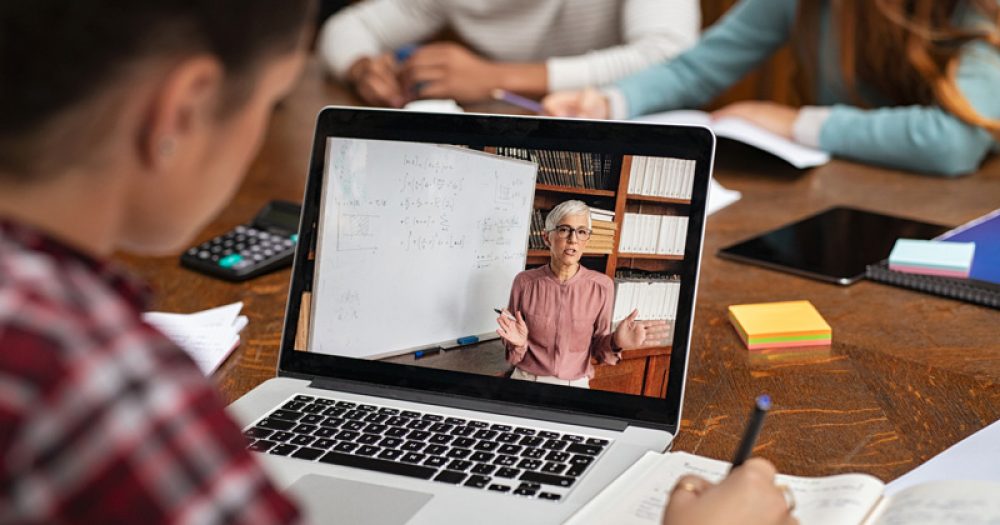Pupils in England’s most deprived schools are less likely to engage in online learning, while school leaders believe a third of all pupils aren’t engaging at all, a new report has found.
The National Foundation for Educational Research study also found pupils in the most deprived schools are twice as likely to have little or no access to IT at home
The report, based on a survey of more than 3,000 teachers and school leaders in mid-May, investigates pupils’ engagement with remote learning during the covid-19 pandemic.
Carole Willis, NFER chief executive, said there’s a “pressing need for a comprehensive and long-term plan” to address the issues, adding the government should extend its scheme to fund laptops to all year groups.
The Department for Education said it would provide laptops to disadvantaged year 10 pupils, but fewer than half have been delivered to schools. Education secretary Gavin Williamson said all the 230,000 computers are “on schedule” to be delivered this month.
A Department for Education spokesperson said they have already committed over £100 million for the laptop scheme and will “do whatever we can to make sure no child, whatever their background, falls behind as a result of coronavirus”.
Here’s a speed-read of the NFER’s key findings…
1. Just third of pupils at most deprived schools are returning work
The report is the latest to highlight that poorer pupils are those missing out most. The survey found schools with the highest levels of pupil deprivation have the lowest level of engagement with remote learning.
Teachers from these schools report 30 per cent of pupils returning work – compared with 49 per cent of pupils in the least deprived schools.
2. Poor pupils twice as likely to have limited IT access
School leaders reported 23 per cent of pupils at their school have limited access to IT – while teachers reported this figure to be 27 per cent.
Limited access is defined by issues such as poor broadband access, little to no IT equipment or having to share equipment with other family members.
However, teachers reported the proportion of pupils with little IT access in the most deprived schools was 39 per cent – more than double that of pupils in the least deprived schools (19 per cent).
Additionally, the report found the higher the level of school deprivation, the less likely teachers are to be in regular contact with their pupils.
Teachers in the most deprived are in contact with 50 per cent of pupils, compared with 67 per cent of pupils at the least deprived.
3. A third of pupils not engaging with work at all
The report found less than half of pupils – 42 per cent – returned their last piece of set work.
Nine out of 10 teachers say their pupils are doing “less or much less work” than would usually be expected at this time of year.
Senior leaders believe around one third of pupils are not engaging with set work at all.
There’s a primary-secondary divide, too.
Primary school leaders say that 71 per cent of pupils are getting involved in some sort of learning activities, while school leaders in secondaries believe an average of 63 per cent of pupils are getting involved in set work.
4. ‘Substantial deficit’ in curriculum coverage
Four out of five teachers reported that all or certain areas of the curriculum are getting less attention than usual due to the pandemic. This drop in attention extends across all core curriculum subjects and more other subject areas.
This is despite between 66 and 75 per cent of teachers rating their ability to offer remote learning support as ‘good or very good’.
Once again it is pupils in the most deprived schools losing out most: 34 per cent of teachers in schools in the poorest areas said all areas of the curriculum are currently getting less attention, compared to 22 per cent in the least deprived schools.
5. Parental engagement ‘significantly lower’ in most deprived schools
Teachers reported that, on average, 55 per cent of their pupils’ parents were engaged with the children’s home learning.
However, in the most deprived schools this is “significantly lower” – 41 percent compared with 62 per cent at the least deprived schools.
The level of engagement also differs between parents with children at primary and secondary level (48 per cent and 56 per cent respectively).
The report states this is likely to be a reflection of secondary parents trusting their children to “manage their own learning”.
NFER encourages schools to “tailor their approach” to encourage more engagement with parents. That includes reviewing communication approaches with parents and offering more sustained and intensive support where parents need it.








Your thoughts